Politics and Government: Socialism

Helene Khatskels
As a member of the General Jewish Workers’ Bund, Helene Khatskels fought to realize socialist ideals about autonomy and liberation. As a Yiddish teacher and writer in Tsarist Russia and later the Soviet Union, she demonstrated a commitment to spreading and inspiring pride in Yiddish culture.
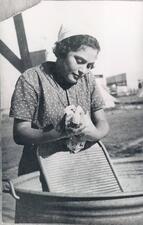
Kibbutz
Although the kibbutz was intended as an equalitarian, democratic utopia, attempts to achieve gender equality have been limited by traditional masculinities and male-controlled spheres and gender inequalities have persisted.
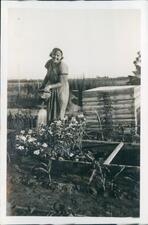
Kibbutz Ha-Dati Movement (1929-1948)
Beginning in 1929, the religious kibbutz (Kibbutz Ha-Dati) movement represented the confluence of progressive ideals of equality and collectivism and traditional customs of Judaism. As a result, women in the movement lived at a crossroads.
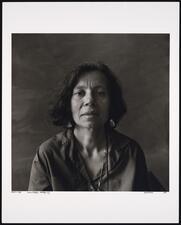
Irena Klepfisz
Irena Klepfisz is a poet whose legacy is key to the history of Jewish, American and lesbian literature. Klepfisz is also a pioneer of the recovery of Jewish and Yiddish women’s writing, to which she has dedicated translations, research, teaching, and activism.
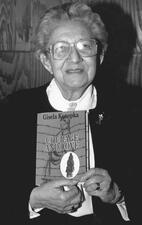
Gisela Peiper Konopka
Berlin-born Gisela Konopka built an international reputation as a group social worker and expert on youth issues. Lauded for her involvement in the rebuilding of social services and education in post-war Germany and beloved by her students at the University of Minnesota, Konopka received more than 42 awards in her lifetime.
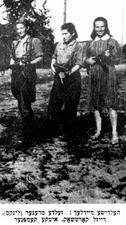
Rozka Korczak-Marla
Rozka Korczak-Marla was active in underground resistance during World War II, serving in the United Partisan Organization to smuggle weapons into the Vilna Ghetto and help Jews escape. After the war she immigrated to Palestine and settled into kibbutz life.

Lonka Korzybrodska
Lonka Korzybrodska was an active member of He-Haluz, a resistance movement during World War II. She participated in missions until her capture and died imprisoned in Auschwitz in 1943.
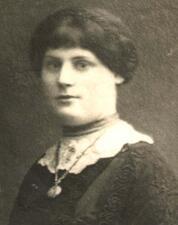
Esther Kreitman
Esther Kreitman was the sole female writer in what many consider to be the most prominent family in the history of Yiddish literature, that of brothers I.B. and I.J. Singer. Krietman’s most notable contributions to Yiddish literature include her writings in support of the Haskalah and her autobiographical novel, Der Sheydim Tants (Deborah).
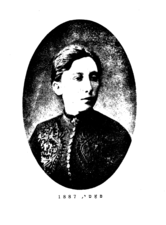
Pati Kremer
Pati Kremer was one of the pioneers of the Jewish workers’ movement in Eastern Europe. Already an active member in the 1890s of the so-called Vilna Group, the precursor to the Bund, she remained closely associated with the Jewish workers’ party until her death in the Vilna Ghetto.
Miriam Kressyn
Miriam Kressyn was that rare talent known for both her performances and her work as a historian of the Yiddish theater. Kressyn performed with Julius Nathanson’s, Maurice Schwartz’s, and Aaron Lebedeff’s Yiddish theater troupes and toured Argentina and Europe. For over forty years, she and her husband hosted the radio program Memories of the Yiddish Theater.

Anna Kuliscioff
Born in Russia but educated in Switzerland, Anna Kuliscioff became one of the key figures in Italy’s early socialist movement and was a feminist advocate who concentrated on poor women’s issues. In her later life, she helped publish a socialist periodical and hosted a prominent salon, often with her partner Filippo Turati.

Pearl Lang
Pearl Lang was the first dancer Martha Graham allowed to perform some of Graham’s own roles. She also brought elements of the ecstatic poetry and dance of Jewish traditions to her own praised work.
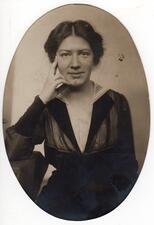
Käthe Leichter
A socialist feminist with a doctorate in political economy, Käthe Leichter was a prominent figure in “Red Vienna” during the interwar years. As a politician, labor organizer, and author, she dedicated her life to benefitting working-class women through social and political reform, and to the struggle against fascism.
Charlotte Lipsky
Charlotte Schacht Lipsky found an unusual balance between activism and pragmatism: on one hand, a follower of the revolutionary Emma Goldman, on the other, the owner of a successful interior decorating business. In her later years, she was involved in Hadassah and the Women’s American ORT, an organization that taught trade skills to Jews around the world.
Johanna Löwenherz
Johanna Löwenherz traveled widely on behalf of Germany’s socialist women’s movement, raising consciousness and lecturing on the social, economic, and legal equality of women. She became one of the most active representatives of the SDP in the Neuwied region, elected as a delegate to three regional party conferences.
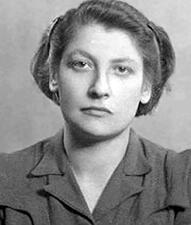
Zivia Lubetkin
Zivia Lubetkin was an important member of the underground resistance movement in Poland during World War II, and later an active member of the United Kibbutz Movement in Palestine.
Esther Luria
Esther Luria was a freelance journalist whose work appeared in many politically left-of-center Yiddish publications in the early twentieth-century United States. A socialist, a feminist, and a political activist, she was also an educator. She used her columns not only to advocate for the ideas in which she believed, but also to provide her mainly east European immigrant readers with a better understanding of their new environment.
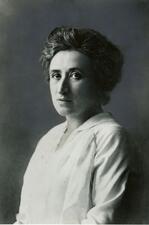
Rosa Luxemburg
Rosa Luxemburg was a socialist revolutionary known for her critical perspective. Born in Poland, Luxemburg had become an important figure in the world socialist movement by 1913. She argued against Lenin’s hierarchal conception of party organization, and against revisionism. Luxemburg was internationalist in orientation and unflinchingly dedicated to a radical democratic vision.

Theresa Serber Malkiel
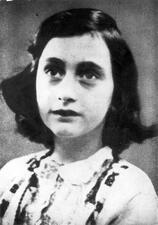
Modern Netherlands
Like Jewish women everywhere, Dutch Jewish women struggled with issues of assimilation, emancipation, and equality as both Jews and women. This article summarizes the conditions and challenges facing Jewish women in the Netherlands and the paths to progress and change they sought—education, work, activism, and literature, among others—from the nineteenth century to the present, including after the particular decimation of Dutch Jewry during the Holocaust.
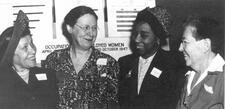
Pauline Newman
Pauline Newman played an essential role in galvanizing the early twentieth-century tenant, labor, socialist, and working-class suffrage movements. The first woman ever appointed general organizer by the International Ladies Garment Workers Union (ILGWU), Newman continued to work for the ILGWU for more than seventy years—first as an organizer, then as a labor journalist, a health educator, and a liaison between the union and government officials.
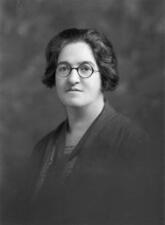
Marion Phillips
As Chief Women’s Officer of the Labour Party, Marion Phillips was one of the most important figures in the campaign to free women from domestic drudgery at the beginning of the twentieth century. Her work brought a quarter of a million women into the Labour Party.
Nora Platiel
The Russian Revolution of 1917 made a convinced socialist of Nora Block and inspired her to study law. After leaving Nazi Germany for France and then Platiel, Platiel returned home, eventually becoming the first woman director of a German district court and being elected for three terms in the Hessian State Parliament.
Poland: Interwar
A minority habitually ignored by scholars, Polish-Jewish women played important roles in the changing cultural and political framework of the interwar years.

Orna Porat
Orna Porat was a leading actor at the Cameri Theater who also performed at the Habimah, the Beer-Sheva Municipal Theater, Beit Lessin, and the Yiddish Theater. After immigrating to Israel from Germany, Porat struggled to learn Hebrew and break into the theater world, but ultimately she was successful. She is known for serving on the Cameri’s administrative board and founding the Cameri Children’s Theater.


